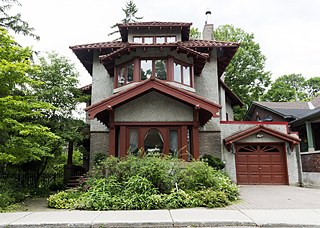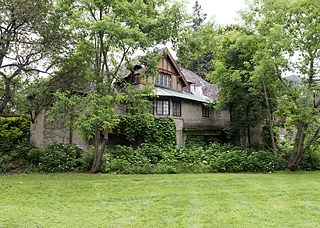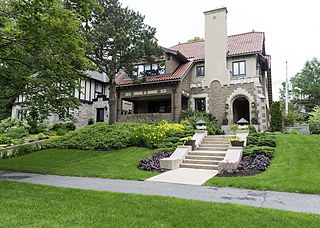Werner Ernst Noffke: Ottawa’s Architect
German Traces in Ottawa
Werner Ernst Noffke: Ottawa’s Architect
Ottawa’s cityscape is shaped by the buildings of W. E. Noffke, which include not only houses, but also splendid churches, hospitals, schools, and other service and commercial buildings. The versatile architect left behind approximately 200 buildings scattered around the city, designed and outfitted with a lot of care and attention to detail.
On June 19th, 2012, a plaque was unveiled honouring the Clemow Estate East, which has been listed as a protected building since 2011. The plaque can be found by Patterson Creek in the park near Clemow Avenue, and it commemorates W. E. Noffke, who was commissioned to build 10 houses here in the 1920s. While W. E. Noffke designed several half-timbered and ashlar hillside houses to fit in with their picturesque environment, others stand out from their quiet, natural surroundings because of their elegance and colour, the magnificent white houses designed in the neocolonial style with hipped roofs and glazed red tiles. W. E. Noffke outfitted his own house on Patterson Creek with his signature features: decorative masonry embellishing and adorning the doorways and window openings, a prominent chimney along the exterior wall, triangular gables, and red roof tiles. The dormer above the veranda helps to bring light and air into the house, while the richly decorated interior emits a comfortable warmth with its wood paneling and lead glass windows.W. E. Noffke was born in Pomerania on April 9th, 1877, and he came to Ottawa with his family as a boy in 1883. He attended the German school on Wilbrod Street, which was associated with the Lutheran St. Paul Church. At 14 years old, he began an apprenticeship with the architect Adam Harvey (1845-1918) from Thuringia, who had replaced the St. Paul Church’s original wooden building with a larger, neo-gothic church in 1887. After finishing his apprenticeship, W. E. Noffke worked for the architect Moses Chamberlain Edey, where he got to know other styles in addition to gothic and romantic. In 1901, the young architect established himself independently, and his first commission was for a housing block containing six rental properties. Since Ottawa was relatively small, lots of residents knew each other and word spread quickly. That same year, Noffke got a contract to build more houses, gaining a reputation as a talented architect. During Noffke’s time, there was no formal structured training program for architects in Canada. Those who couldn’t afford to study in the US or Europe had to take courses in art studies and applied art in addition to their apprenticeship, which is what Noffke did. In Ontario, these courses were regulated by the Ministry of Education. In 1907, the local “Ontario Association of Architects” was established, and W. E. Noffke served as president of the association from 1910-1911.
This exceedingly productive architect’s creativity was not limited to any one particular style, and his works can be found outside of Ottawa as well. There are more than 20 Noffke churches in the rest of Ontario, while schools designed by him can be found across Canada. Shannon Ricketts’ book “Werner Ernst Noffke: Ottawa’s Architect” contains a complete list of the Noffke buildings that are still standing, along with illustrations and a street directory.
Clemow Estate East Heritage Conservation District
18 Clemow Avenue
Ottawa, ON
Postal Station B
47-59 Sparks Street
Ottawa, ON
Medical Arts Building
180 Metcalfe St
Ottawa, ON
Book recommendation
Ricketts, Shannon (2013): Werner Ernst Noffke: Ottawa's Architect.
Heritage Ottawa


